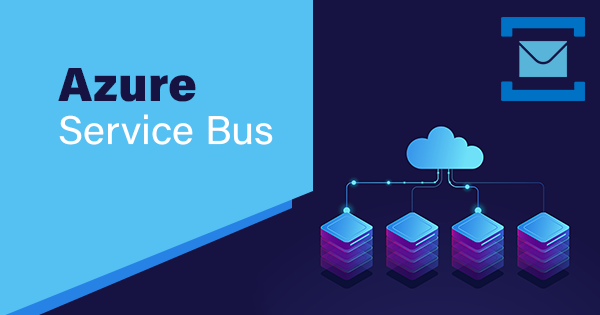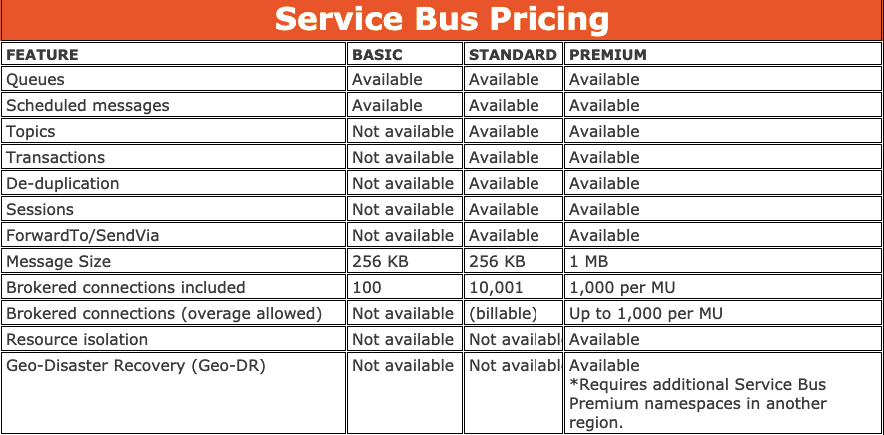The increasing popularity of the cloud is visible to everyone in the IT sector nowadays. Organizations rely on information far more than any other point in the recent history of IT. So, why do we need an Azure service bus? The answer to this question lies primarily in the messaging applications of various organizations.
The messaging application needs interaction with other applications for delivering and exchanging information. On Microsoft Azure, you could use a simple queue for sending and receiving messages. In special cases where an ordinary queue cannot fulfill the requirements of messaging, a queue equipped with publishing and subscribe mechanism could address the issue.
Preparing to become a certified Azure professional? Check our Azure Certifications Training Courses now!
However, certain applications demand a connection between queues and applications. In these cases, you need to consider the implementation of a cloud solution that provides Messaging as a Service. The following tutorial would explore relevant Azure service bus documentation to provide essential insights about a competent solution for Messaging as a Service on Azure.
What is Azure service bus?
The foremost addition to this tutorial would be the definition of the Azure service bus. You can think of the service bus as a messaging service on Azure cloud that helps in connecting any applications, devices, or services running in the cloud with other applications and services. Therefore, the service bus serves the role of a messaging broker for applications on the cloud and across multiple devices.
It is an ideal choice for reliable information delivery with ease as a fully-managed, third-party communication system. Also, the applications of the Azure service bus include decoupling applications and services. Further reflection on detailed Azure service bus documentation shows that data transfer in the service bus between applications and services uses messages. The message is general information with representation in a binary format and could also contain JSON, XML data, or just plain text.
Azure services provide a number of capabilities to the Microsoft Azure users. Here we enlist top Azure services that are most popular at present!
Applications of the service bus
The general messaging scenarios could help in supporting this Azure service bus tutorial. We could know about the situations that are ideal for applications of the service bus. The first situation arises with messaging, which involves the transfer of business data such as inventory movements, sales or purchase orders, and journals. The use of service bus in decoupling applications is also evident in scenarios demanding improvement of scalability and reliability of applications and services.
With the functionality of decoupling applications, client and service do not have to be online at the same time. The applications of a service bus in topics and subscriptions help in activating one-to-many relationships between publishers and subscribers. The functionalities of a service bus in message sessions are also evident in scenarios requiring the implementation of workflows that need message deferral or message ordering.
The architecture of service bus
Now, the attention of this Azure service bus tutorial should focus on the important elements in Azure service bus architecture. Let us focus on each element in the architecture of a service bus to understand its functionality better.
The foremost element that you would find in the architecture of the service bus is “Namespaces.” Namespaces are the container that holds all messaging components. Namespaces could act as application containers and can include many queues and topics in one namespace.
The most significant element of Azure service bus architecture is queued. Queues are responsible for sending and receiving messages on the service bus. Queues serve their literal purpose by storing messages and wait for receiving applications to receive the messages and processing them. The messages in different queues are arranged in order, and they get timestamps upon their arrival in the queue. After accepting a message, queues store the message with the utmost safety in redundant storage. The delivery of messages follows a “pull” mode for delivering messages upon requesting.
The next important element in the architecture of the Azure service bus is topics. Topics are also ideal for sending and receiving messages, especially in point-to-point communication scenarios involving publish/subscribe actions. Every topic in the service bus architecture could include many independent subscriptions. When a sender sends a message to a particular topic, all subscribers of the concerned topic receive a copy of the message. Subscriptions are entities with unique names and excellent persistence, albeit with possibilities for expiry or autodeletion.
Furthermore, the facility of customization is visible in the case of topics in scenarios where you don’t want certain subscriptions to receive all messages sent for a particular topic. In such cases, rules and filters can come in handy for defining conditions to activate optional actions. For example, you could establish or change message properties and filter specified messages.
Also Read: An Overview of Azure Storage
Advanced features of service bus
Azure service bus documentation also offers insights into the advanced features on the service bus. The advanced features help in solving highly complex messaging problems. So, let us take a look at some of them in the following part of this discussion!
Message sessions are highly crucial for Azure service bus applications to provide first-in, first-out (FIFO) assurance. The message sessions could help in providing joint and sequential management of unbounded sequences of related messages.
The auto-forwarding feature is also one of the important new additions that you can find in the Azure service bus tutorial. The auto-forwarding feature helps in linking up a queue or subscription with another queue or topic. The only condition for linking is that they should be in the same namespace. The auto-forwarding feature helps Azure service bus in the automatic removal of messages from a queue or subscription before placing them in a distinct queue or topic.
Dead-letter queue or DLQ is another advanced feature that you can find with a service bus on Azure. The support for DLQ on the Azure service bus helps in reviewing messages which are not delivered to any receiver. DLQ stores the messages which could not be processed along with the undelivered messages. Users could use the service bus to pick out messages from the DLQ and inspect them.
A scheduled delivery is another helpful feature in a service bus that helps in submitting messages to a topic of the queue for delayed processing. Users could also schedule the availability of a job for processing tasks by a system at a particular time.
Message deferral helps in postponing the retrieval of a message by a queue or subscription client. The message continues to stay in the queue or subscription, albeit in an isolated state. Message deferral is ideal for certain special circumstances related to the application.
Client-side batching in the Azure service bus could also present a unique functionality by helping queue or topic client to delay message sending. Additional messages sent during the delay ultimately transmit as a single batch.
Some of the other advanced features that you could find in documentation refer directly to batching, transactions, and filtering and actions. Furthermore, you could also notice features for autodeletion on idle mode, detection of duplicate messages, support for security protocols, and geo-disaster recovery.
Want to know more about Azure Service Bus? Just submit your questions or start a discussion at Whizlabs Forum to get answers by the experts.
Pricing of service bus offerings
After reflecting on the functionalities and advanced features of the service bus, let us take a look at details of azure service bus pricing. The interesting factor about pricing for service bus is the facility of three different tiers of pricing plans. The three pricing plans are Basic, Standard, and Premium. The “Basic” tier comes without any prominent offerings like the other alternatives.
However, it can be used for sending and receiving messages in queues with maximum message size at 256 KB. The unique azure service bus pricing for “Standard” and “Premium” tiers follow the differences in services in both tiers. For example, the “Standard” tier does not have resource isolation or geo-disaster recovery functionalities.
Difference between service bus and event hub
The final element in this discussion should refer to a comparison of service buses with event hubs. Event hubs are data streaming services that help in streamlining data pipeline for users to help in the better observation of insights. Azure event hubs also serve as a messaging service, just like a service bus on Azure. Both the event hubs and service buses on Azure are known for specific architectural advantage for specific objectives. So, let us take a look at the Azure service bus vs. event hub.
The focus of event hubs is on event streaming, and the focus of the service bus is on high-value enterprise messaging. Therefore, event hubs are ideal for implementing patters with event messages.
In the case of event hubs, the messages from different event producers are stored in a single stream. Receivers could view the message but cannot remove it. On the other hand, receivers get their copy of the message on the service bus.
Another point in the Azure service bus vs. event hub refers to the facility of additional features that are ideal for messaging scenarios. The service bus can provide the functionalities of various advanced features such as message deferral and dead-letter queues. On the other hand, event hubs do not provide such features since they are aligned with the sole objective of enabling the event platform to manage a large volume of messages.
Microsoft has launched many new certifications and retired previous ones. Let’s check out new role-based Azure Certifications path.
Conclusion
Based on our observation of different functionalities and features of the Azure service bus in the above discussion, the service bus proves its mettle. The essential advantages of using the service bus include higher reliability with the facility for rolling back transactions to recover messages. The advantage of granular scalability allows better options for scaling without affecting others.
Most important of all, the service bus follows the precedents of a multi-tenant cloud service offering. As one of the founding principles of cloud computing, multi-tenant architecture can act as validation for many functionalities and features of the service bus. Also, the exceptional advantages of service buses over the event hub showcase its dominance as a messaging service.
You can also check out our Microsoft Azure certification training courses and get ready to become a certified Azure professional!
- Top 20 Questions To Prepare For Certified Kubernetes Administrator Exam - August 16, 2024
- 10 AWS Services to Master for the AWS Developer Associate Exam - August 14, 2024
- Exam Tips for AWS Machine Learning Specialty Certification - August 7, 2024
- Best 15+ AWS Developer Associate hands-on labs in 2024 - July 24, 2024
- Containers vs Virtual Machines: Differences You Should Know - June 24, 2024
- Databricks Launched World’s Most Capable Large Language Model (LLM) - April 26, 2024
- What are the storage options available in Microsoft Azure? - March 14, 2024
- User’s Guide to Getting Started with Google Kubernetes Engine - March 1, 2024

